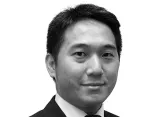Global asset managers in China: Opportunities arising from structural reform
By Ray ChouThis is now an inflection point for foreign asset managers as China vows to allow foreign players to take controlling stakes and operate domestically in the private securities fund management (PFM) and even mutual fund management markets.
In particular, global asset managers can capture the opportunities stemming from the structural reform of the market, where regulators are promoting capital markets and professional asset management in order to replace the legacy “shadow banking” market.
The past of China Asset Management – “Quasi” asset managers
Historically, China’s asset management industry is dominated by “quasi” asset managers, including bank wealth management products (WMPs) and trust companies, whose nature is fundamentally different from asset managers under the global definitions. “Quasi” asset managers account for RMB 74 TN (USD 11.4 TN) of AUM, representing 61% of total AUM in China’s asset management industry. (See Exhibit 1)
Exhibit 1: Total AUM of Chinese asset management industry

The future of China Asset Management – “Traditional” asset managers
Driven by the agenda of the 19th Party Congress meeting, we expect capital markets to grow fast in order to facilitate the deleveraging of the banking sector, and more importantly, to displace of the shadow banking market, which poses considerable systemic risks. We expect capital market development, coupled with recent asset management regulations which tackle the abovementioned issues (See Exhibit 2), to fundamentally change the competitive landscape, with AUM shifting towards “traditional” asset managers such as mutual funds and private funds.
Under such direction, the existing bank WMPs will face significant challenges to sustain. Bank WMP AUM has experienced the first-ever drop from RMB ~28TN (USD 4.4 TN) during 2017 H1. We expect more outflow of AUM from bank WMPs as banks consider alternative approaches: 1) to migrate funding back to deposit; 2) to convert bank WMPs into NAV-based products; 3) to distribute products from traditional asset managers.
This represents unprecedented structural opportunities for traditional asset managers. On one hand, traditional managers can develop and offer alternative products for banks to distribute to their customers; on the other hand, asset managers can work collaboratively with banks that lack investment capability to run NAV-based products (most likely mid-to-small sized banks) by providing them investment advisory services on their managed portfolio and/or directly managing part of the outsourced portfolio for the banks.
“Many roads to China”, with IMWFOE/PFM emerging as a tangible one
Global asset managers are now presented with multiple potential routes to enter China:
- Onshore private funds: Set up investment management wholly-foreign owned enterprise (IM WFOE) and apply for qualification to operate private securities fund management (PFM) business
- Onshore public funds: Participate in joint venture of mutual fund management companies (FMC). Note that the foreign ownership limit is now lifted to 51% and will end after 3 years
Whilst the above routes are not mutually exclusive and global players can attempt to increase their China presences through all of them, the opportunity to set up IM WFOE and run private securities fund business has emerged as one the most tangible routes for global players to enter and operate domestically under full control in China now. At time of writing, 11 global asset managers have already received the PFM qualification, with several players having already issued their first product.
To successfully establish their presence in the private securities market, global asset managers must identify their target proposition in China, and then consider how best to leverage their global capabilities to achieve that, and identify where building of local capabilities and partnerships are needed to better fulfil the target proposition. (See Exhibit 2)
Exhibit 2: Strategic levers for global asset managers to start and grow PFM business

Some asset managers have essentially leveraged on the proven track record of their QFII A share funds to launch their first products, whilst others focus on their global strengths in CTA and quantitative strategies. This can help global players quickly establish brand and scale, and meet the stringent requirements on issuing the first product within 6 months of PFM registration. Nevertheless, global asset managers should note that there may be challenges in replicating offshore / global strategies directly to China. For example, the universe of fixed income instruments traded offshore is very different from those traded onshore, which will require fairly different credit analysis expertise.
Given China’s unique nature, global managers wanting to be successful in China will unavoidably have to adapt and be open-minded to “execute strategy in uncertainty”. This means they should act fast to seize tangible entry opportunities made available, and then leverage early entry to build up capability readiness, in order to become “relevant contenders” for future larger opportunities.



















 Advertise
Advertise









